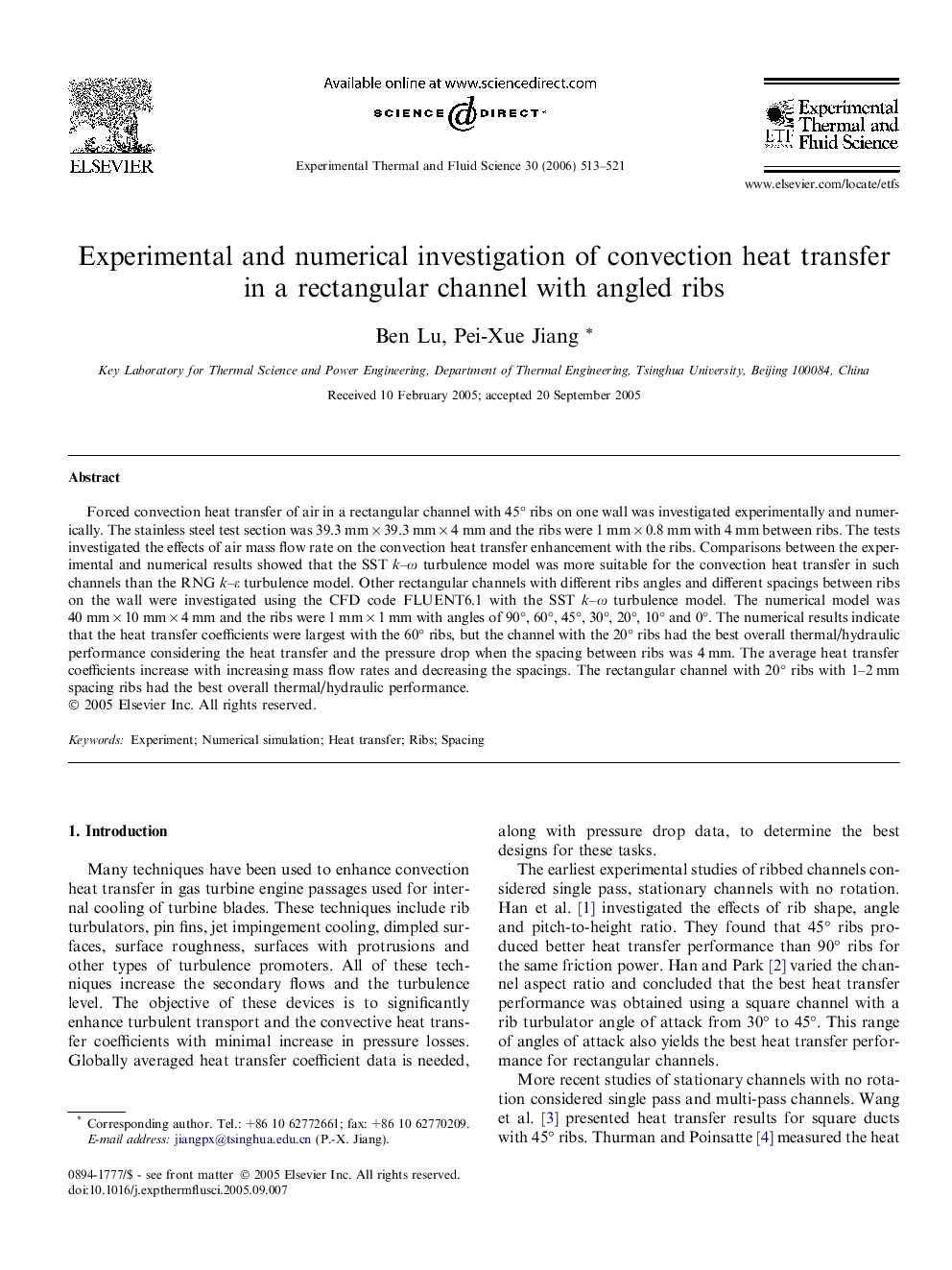| Article ID | Journal | Published Year | Pages | File Type |
|---|---|---|---|---|
| 652802 | Experimental Thermal and Fluid Science | 2006 | 9 Pages |
Forced convection heat transfer of air in a rectangular channel with 45° ribs on one wall was investigated experimentally and numerically. The stainless steel test section was 39.3 mm × 39.3 mm × 4 mm and the ribs were 1 mm × 0.8 mm with 4 mm between ribs. The tests investigated the effects of air mass flow rate on the convection heat transfer enhancement with the ribs. Comparisons between the experimental and numerical results showed that the SST k–ω turbulence model was more suitable for the convection heat transfer in such channels than the RNG k–ε turbulence model. Other rectangular channels with different ribs angles and different spacings between ribs on the wall were investigated using the CFD code FLUENT6.1 with the SST k–ω turbulence model. The numerical model was 40 mm × 10 mm × 4 mm and the ribs were 1 mm × 1 mm with angles of 90°, 60°, 45°, 30°, 20°, 10° and 0°. The numerical results indicate that the heat transfer coefficients were largest with the 60° ribs, but the channel with the 20° ribs had the best overall thermal/hydraulic performance considering the heat transfer and the pressure drop when the spacing between ribs was 4 mm. The average heat transfer coefficients increase with increasing mass flow rates and decreasing the spacings. The rectangular channel with 20° ribs with 1–2 mm spacing ribs had the best overall thermal/hydraulic performance.
